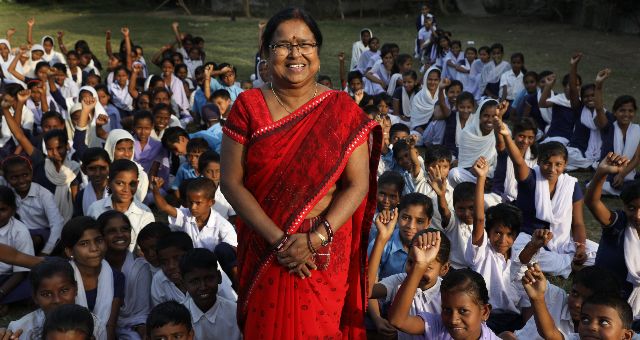Think back for a moment to when you were a student. Did the scientists you studied in biology look like you? Did the word problems you sweated over in geometry reflect your culture or the neighborhood where you grew up? Did the books you read in history class include the perspectives of your ancestors?
For too many people, the answer to all of these questions is “No.” Whether students see themselves in their learning materials may depend on their race, gender identity, country of origin, culture, or even ZIP code.
If students can see themselves and their communities in what they’re learning, then they learn differently—and better. This is the idea behind culturally responsive teaching (CRT). With CRT, students’ cultural knowledge is seen as an asset in the classroom, not something that should be checked at the door. Cultural responsiveness is not new, but in this year of reckoning with racial inequity, there is renewed interest among higher education instructors.
Bringing cultural responsiveness into teaching isn’t just about checking a box or making an instructor feel good about doing “the equitable thing.” CRT yields tangible benefits for students, facilitating brain processing and cultivating critical thinking skills. Research has shown that students are most satisfied with instructors who respect and are inclusive of cultural differences. Instructional materials that expose students to racial and ethnic diversity enhance their engagement and active thinking skills.
As a growing number of instructors look to introduce CRT into their classrooms, it’s imperative that they are equipped with culturally relevant educational materials for their students to use. The problem is that most publisher textbooks are mass-produced and designed to appeal to the traditional “majority.” As a result, textbooks often reflect the traditional norms and structural biases of our society—in effect promoting a white, male, middle class, North American perspective. Moreover, because publisher textbooks are copyrighted, instructors are unable to revise the course content to correct any historical biases or include more diverse perspectives.
One way around this challenge of finding culturally relevant learning materials is to look to open educational resources (OER). Guided by the idea that high-quality materials should be available to—and reflective of—anyone, OER are free for educators and students to use, customize, and share. Because OER are customizable, they give educators the flexibility to incorporate voices, examples, and activities that reflect their students’ backgrounds and realities. They also allow students to contribute to educational content, bringing in their own experiences and knowledge.
Several of the community colleges in Achieving the Dream’s (ATD) nationwide network are leveraging both CRT and OER to promote student success and equity. One example is Northeast State Community College in Tennessee, which has launched a new course called Reclaiming Our Past: The Truth about Tennessee. The goal of this course is to emphasize the significant contributions traditionally underrepresented people have made to the state—contributions that are often minimized, misrepresented, or even omitted from standard Tennessee history texts and curricula. The course draws on various OER to illuminate these important perspectives.
At another ATD Network college, Bunker Hill Community College in Boston, instructor Aurora Bautista noticed that her students—many of whom identify as Asian American—weren’t connecting with the cultural anthropology textbook, especially when it came to topics related to race and identity. So, instead, she asked her students to create ethnographies of Boston’s historic Chinatown neighborhood. Students conducted interviews with residents, recorded observations, took photos of the area, and created e-portfolios that became openly licensed resources, which the instructor then used as course materials for the next semester. In turn, these future students also contributed ethnographies to the e-portfolios, adding to the growing collection of cultural perspectives while enriching their understanding of sociology in the process.
Another example of culturally responsive teaching and OER working hand-in-hand comes from several criminal justice faculty working in the City University of New York (CUNY) system. When faculty there surveyed a criminal justice course textbook and found that it almost exclusively showed images of males of color as the criminals, they created a new open-access text that didn’t perpetuate harmful stereotypes and was more representative of U.S. crime statistics.
Textbooks also rarely show images of non-white, nonbinary, disabled, or plus-size people in relatable, empowered situations. Diverse, openly licensed image libraries, such as Images of Empowerment and Disabled and Here, offer a range of images that instructors can integrate into learning materials to make them more responsive to students’ realities.
These are just some of the ways that instructors are using open educational resources and practices to bring greater cultural relevance into their classrooms and ensure that what they teach reflects whom they teach. We invite others to contribute their open educational resources that promote culturally responsive teaching to our growing archive here.
Culturally responsive teaching is no longer a choice—it’s a must. And while it’s a new practice for some faculty, there are openly licensed resources out there to help. By going beyond traditional textbooks, instructors can also go beyond the structural norms and dominant perspectives that have perpetuated inequities for decades. With culturally responsive teaching and open educational resources, we can open the door for more inclusive, relevant, and impactful learning.
Richard Sebastian is the director of open learning at Achieving the Dream. Ruanda Garth McCullough is the director of program development at Achieving the Dream.

